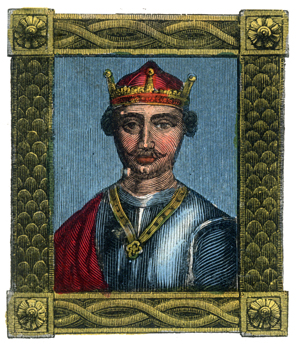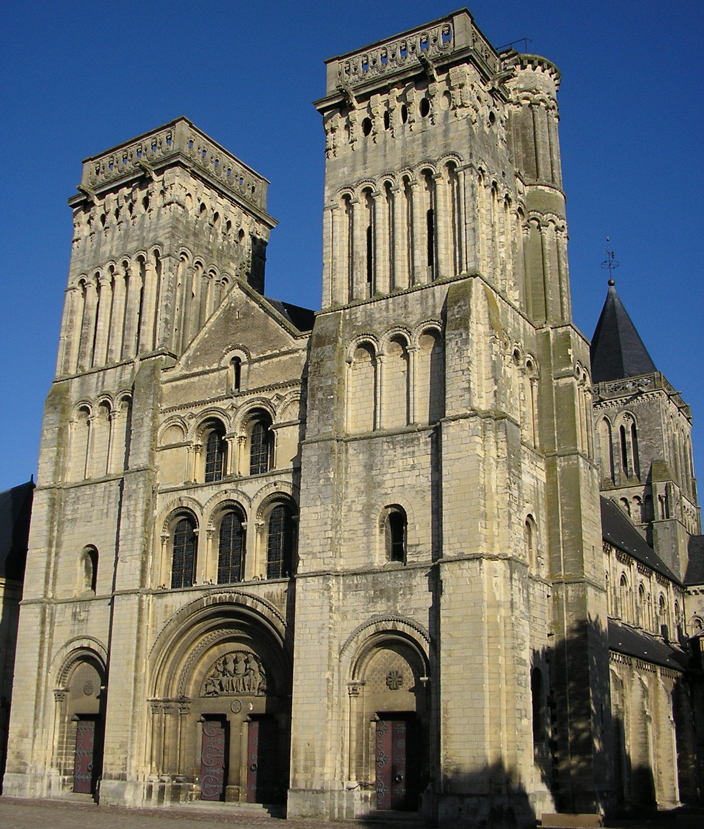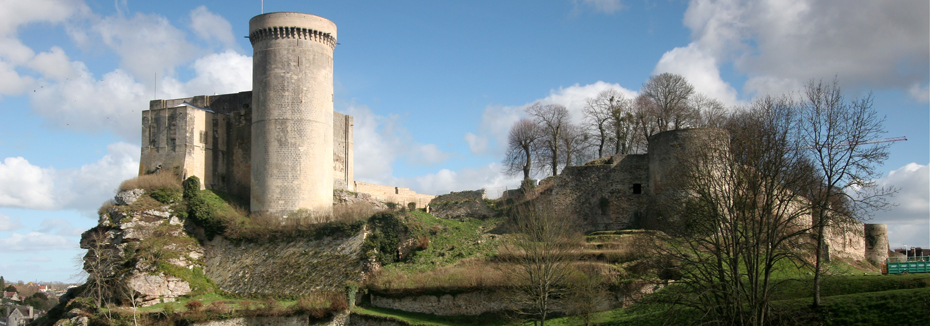William the Conqueror

William the Conqueror's importance has meant that he has often been the subject of artists' work. Seen here is one depiction of the Conqueror, probably more the product of artistic license than fact.
William, the 7 year old Duke
William was born in late 1027 in Falaise, Normandy, son of the Norman Duke Robert the Magnificent. Following his father’s death on pilgrimage to Jerusalem, William, then only 7, succeeded him. Normandy, which had developed from Viking settlements around Rouen, and still retained links to Scandinavia, was already very important - French royal power had waned and was limited to the area around Paris, with the rest of France divided up into principalities and lordships, of which Normandy was one.
Cousins Across the Channel
An important link between Normandy and England had already existed for several decades when William came to power: His grandfather’s sister, Emma, was the widow of Aethelred, the late English king, and as the severity of Scandinavian attacks on England increased, Emma and her children, including the future King Edward II (The Confessor), had sought refuge in the Norman court, where they were regular guests.
1051: Marrying into Power and the Promise of a Crown
Although William initially fought on the side of French King Henry I in territorial disputes in northern France, from 1051, the king joined forces with his own former enemies and turned against him, probably because William was becoming increasingly important and perceived as a threat. (He married the daughter of the powerful Count of Flanders and had been promised the throne of England by Edward II in that year.)
Outliving the Enemy
William grew increasingly powerful, effectively withstanding attempts by the French king and his main ally, Count Geoffrey of Anjou, to take Normandy, both in 1053 and 1057. It was the death of both of these enemies in 1060 that turned things strongly in William’s favour. King Henry’s successor was a child and Geoffrey’s demise led to disputes over succession, meaning that the main threats to William’s rule were no more.
Creating a Norman Court
This was the period of William’s expansion. He first took over the county of Maine to the south of Normandy, promoted his two half brothers to important posts, and forged a strong relationship with the Norman aristocracy.
William as a Patron of the Norman Church
The Norman church flourished. William encouraged the establishment of monastic foundations, including two important abbeys at Caen, under the supervision of his chief religious advisor Lanfranc, whom he was later to take to England, and appoint Archbishop of Canterbury. The increased prosperity of the Norman Church in light of William’s growing success led to the rise of a new architectural aesthetic: The Romanesque.

The convent at Caen constructed by William in the eleventh century. It inspired many later Norman Buildings in England after the Conquest.

